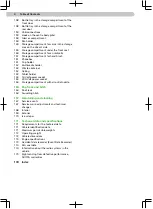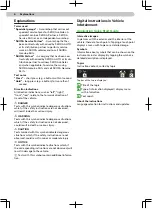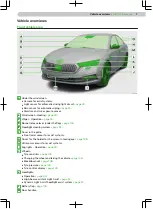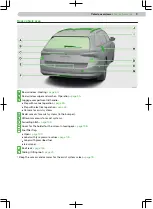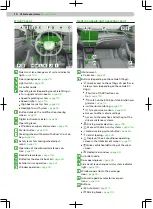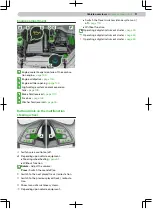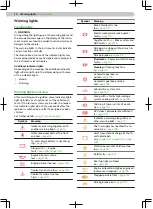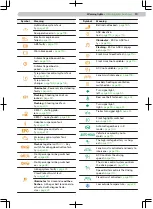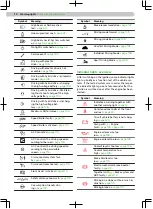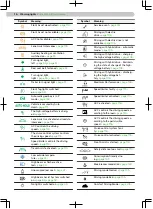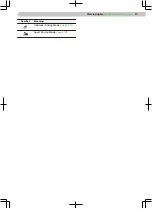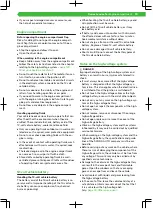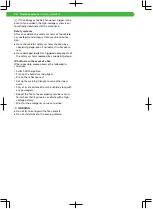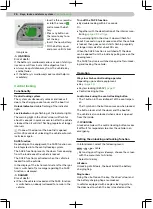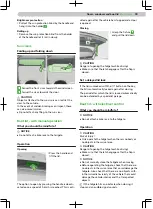
Correct and safe
Introductory notes for correct use
▶
Read this Owner's Manual carefully, as proceeding
in accordance with this manual is a prerequisite for
the correct use of the vehicle. This Owner's Manual
should therefore always be in the vehicle.
▶
When using the vehicle, the generally binding legal
provisions that are specific to the country must be
observed. Such as those for transporting children,
switching off airbags, using tyres, road traffic and
the like.
▶
Do not exceed the maximum permissible weights
and loads.
▶
Do not exceed the maximum permissible roof load.
▶
Use the specified fuel and operating fluids.
▶
Drive on roads that meet the technical vehicle pa-
rameters. Obstacles that exceed the ground clear-
ance of the vehicle
hicle when driving over them.
▶
Care must be taken during operations related to
operation, maintenance and self-help to avoid
damage to the vehicle or injury. If required, seek
the help of a specialised garage.
▶
All work on the vehicle’s safety systems e.g. on the
seatbelts or the airbag system, may only be carried
out by a specialist garage.
▶
When using accessories, please note the instruc-
tions in the accessory manufacturer’s instruction
manual. These include child seats, roof racks, com-
pressors etc.
▶
Please note the service intervals.
New vehicle or new parts
New vehicle - Running in the engine
Driving style during the first 1500 km determines the
quality of the engine run-in process.
▶
During the first 1000 km, rev the engine to max.
3/4 of the highest permissible engine speed and
avoid using a trailer.
▶
Over the next 500 km, the engine speed can be
slowly increased.
Depending on driving style and operating conditions,
the engine consumes some oil, up to 0.5 l/1000 km.
Consumption may be higher over the next 5000 km.
New brake pads
New brake pads do not provide the optimum braking
effect during the first 200 km, they have to be worn
in first. Therefore, drive very carefully.
New tyres
New tyres do not have optimum grip for the first
500 km. Therefore, drive very carefully.
Regular checks
What should be taken into account before driving?
A vehicle with technical defects can increase the risk
of accidents and injuries.
Eliminate any defects before driving. If required,
seek the help of a specialised garage.
Pay special attention to the following points.
▶
Is the tyre undamaged?
▶
Is the tyre tread sufficient?
▶
Is the tyre pressure sufficient?
▶
Do the headlamps, brake and turn signals work?
▶
Is the windscreen in good condition?
▶
Is the engine oil, brake fluid and coolant level OK?
▶
Is the air intake in the engine compartment free
from obstruction?
▶
Are the air outlet nozzles or air intake in front of
the windscreen free from obstruction?
▶
Are the windscreen wiper and washer system and
windscreen wiper blades functional?
▶
Is the windscreen washer fluid level sufficient?
▶
Are the windscreen wiper blades in good condi-
tion?
▶
Are all seatbelt system components in good work-
ing order? Are the seatbelts clean and have the
buckles been unclogged?
▶
Is the spoiler working properly?
▶
Are parts and components of the vehicle still visi-
bly attached?
▶
Are there no oil stains or other operating fluids un-
der the vehicle?
No improper vehicle adaptations
Improper changes and maintenance can cause mal-
functions and impair safety-related and other func-
tions of the vehicle.
▶
We recommend that adaptations, repairs and tech-
nical changes to the vehicle should only be carried
out by a specialist garage.
▶
Do not cover the engine with additional insulation
material e.g. with a cover.
Keep sensors and cameras functional
Some functions of your vehicle are supported by
sensors and cameras on the inside and outside of the
vehicle.
Accessories installed on the vehicle rear, such as bi-
cycle carriers, can impair the function of the systems
and cameras.
▶
Do not cover or paste the sensors and cameras and
keep them clean.
18 Correct and safe › Introductory notes for correct use

